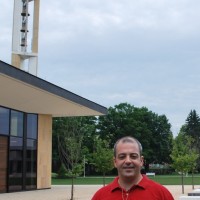September 29, 2023
Building Resilience, Tackling Cancel Culture, Catalyzing Change
An item from a neo-liberal… This one is an item from a business professor with little direct experience in education, but who believes free market economic principles are the answer to education’s (and pretty much all other society’s social) problems.
It’s not novel to note the increasing numbers of college students battling significant mental-health challenges.
Roughly one fifth of adolescents, ages 12 to 17, had a major depressive event in 2021, and that’s up sharply over the last 10 years. And young adults in the 18- to 25-year old cohort weren’t far behind, as over 18% had a major depressive event.
As Lisa Damour, a bestselling author and psychologist, has commented, feelings like anxiety and sadness are perfectly normal, acceptable, and even good and important. What’s harmful is when those sorts of feelings become paralyzing and all-encompassing. That’s what many individuals are increasingly experiencing.
What is novel is a college going beyond treating the symptoms and moving to a more proactive stance that embeds the practice of building resilience—as part of an antidote to these mental challenges—into its core academic programming.
That’s what Pepperdine University is doing. Its president, Jim Gash, joined me and Jeff Selingo on the latest episode of Future U. to talk about its approach through a program they call RISE—Resilience-Informed Skills Education.
As those of you who have read my book From Reopen to Reinvent already know, building resilience—and other habits of success like agency, executive functions, perseverance, self-efficacy, and so forth—through academics is critical in my view.
Part of the reason schools have struggled historically to teach these habits is that schools have too often viewed these habits as something to teach students in a standalone lesson as opposed to interdependently with academic knowledge and skills. Educators often treat them as one more thing on the long list of things schools should teach students. Indeed, less than a quarter of K–12 teachers say their schools implement these skills on a programmatic, schoolwide basis. And something I hear from faculty members and administrators at colleges and universities all the time is this: building habits of success as an antidote to mental health challenges just isn’t my job. As a result, schools generally teach these habits poorly if they even address them.
But that doesn’t mean that helping students build these habits is a bad idea. After all, many schools have struggled to teach core academic knowledge or skills. That doesn’t mean it can’t be done well or shouldn’t be done at all. Informed by the research of Jonathan Haidt (which you can read on Substack hereAfter Babel) and others, Pepperdine is directly wading into this work, as you can hear on our episode.
What’s more, President Gash said that the building of resilience and addressing mental-health challenges also touches upon another flash point in American higher education right now: cancel culture.
On the episode he shared some amazing stories about how Pepperdine has created a culture anathema to the cancelling craze, with the Pepperdine College Democrats even leading the open prayer for an event on campus that featured Ben Shapiro, who had been invited by the College Republicans.
That’s just scratching the surface of what was a fascinating conversation. Check out the show, “Building Resilience in Students, Deliberately,” here on Future U.
Catalysts for Change: What Drives Us?
Jeff and I joined another podcast this month as well. Rather than play the role of hosts, Jill Shah, president of Shah Family Foundation, welcomed us once again to the Catalysts for Change podcast to talk about how incentives are structured in education and how we can change them to better prepare students for the workforce. This conversation went deep into the zero sum set of rules we’ve unwittingly created in education—and how they’ve undermined even the most well-intentioned of efforts. Check out our conversation here at “What Drives Us? Michael Horn and Jeff Selingo on Incentives in Education.”
What Are The Desired Learning Outcomes for a New High School?
In the Lexington Observer—a local, digital newsroom in Lexington, Mass., where I live—Tracy Kim Horn (yup, my wife!) wrote a stirring letter to the editor about the new Lexington High School project. As she noted, it’s amazing that the school already has determined sustainability goals—yet the desired learning outcomes have not been decided. In her words:
There was much discussion about being able to accommodate our growing student population—obviously a very important concern—but no mention of how we will ensure that our teachers will be able to keep up with the changing needs of our students over the next fifty years. … This seems backwards. As they say in design, “form follows function”—meaning that a building should be in service of its purpose.
I’ll add to her published thoughts a couple of my own: after determining the outcomes that a community desires, it should then spend time designing the actual learning experience to get those outcomes. Does it just accept as a given that students will continue to learn in lockstep in egg crate-style classrooms in fixed class periods? Or might it envision learning studios with personalization, projects, and passions driving active learning? Schooling communities and educators have choices. Once they’ve answered those questions, then they can move to thinking about the design of the building itself. Will a twentieth-century-style high school building be the answer? Or might there be a different solution that, yes, could also be leaner and greener?
Check out my wife’s letter, “What are the desired learning outcomes for the new high school?” here.
He Said It, Not Me!
Last but not least, Inside Higher Ed conducted a Q&A with Brian Rosenberg, who served as Macalester College’s president for 17 years and is now a senior adviser to the African Leadership University, about his new book, Whatever It Is, I’m Against It: Resistance to Change in Higher Education. In his words:
The current financial trajectory of higher education is just not sustainable. For a long time, I resisted that idea … but I’ve come around to the belief that there’s going to be a major disruption of the current market and the status quo, driven first of all by economics. The discount rate at private colleges has been going up about 3 percent a year for an extended period. It’s now over 56 percent. And you can’t just keep cutting the price unless you figure out a way also to reduce the cost of actually providing the service. You keep adding 3 percent a year to the discount rate and eventually you get to 100 percent and you’re giving it away for free.
Then demographics are not working in favor of American higher education. In the second half of this decade, the number of high school graduates is going to decline by about 15 percent. And the market is going to have to rightsize itself. There are unfortunately just too many colleges for that size market.
We’re also seeing—and this is probably the least expected thing—a lower percentage of students from many states choosing to go to college. … So you combine the cost of providing it and the willingness and ability of people to pay and the demographics and you have what people have been describing for a long time—not always accurately, but I think it’s true now: an unsustainable economic situation.
As always, thanks for reading, writing, and listening.
© 2023 Michael Horn
No comments yet.
RSS feed for comments on this post. TrackBack URI
- SEO Powered Content & PR Distribution. Get Amplified Today.
- PlatoData.Network Vertical Generative Ai. Empower Yourself. Access Here.
- PlatoAiStream. Web3 Intelligence. Knowledge Amplified. Access Here.
- PlatoESG. Carbon, CleanTech, Energy, Environment, Solar, Waste Management. Access Here.
- PlatoHealth. Biotech and Clinical Trials Intelligence. Access Here.
- Source: https://virtualschooling.wordpress.com/2023/09/29/building-resilience-tackling-cancel-culture-catalyzing-change/
- :has
- :is
- :not
- :where
- $UP
- 06
- 10
- 12
- 13
- 16
- 17
- 2021
- 29
- 40
- 8
- a
- ability
- Able
- About
- academic
- academics
- Accept
- acceptable
- accommodate
- accurately
- active
- actual
- actually
- add
- adding
- address
- addressing
- administrators
- adults
- adviser
- African
- After
- again
- against
- agency
- Ages
- All
- already
- also
- always
- amazing
- American
- an
- anathema
- and
- Another
- answer
- Antidote
- Anxiety
- approach
- ARE
- around
- AS
- At
- author
- auto
- away
- b
- Bad
- basis
- battling
- BE
- become
- been
- begin
- behind
- being
- belief
- believes
- ben
- bestselling
- bestselling author
- Better
- Beyond
- book
- Brian
- build
- Building
- business
- but
- by
- Campus
- CAN
- catalyzing
- Category
- Center
- challenges
- change
- changing
- check
- choices
- choosing
- class
- Cohort
- College
- Colleges
- Colleges and Universities
- combine
- come
- comment
- commented
- comments
- Communities
- community
- conducted
- continue
- Conversation
- Core
- Cost
- could
- Couple
- created
- critical
- Culture
- Current
- cutting
- data
- decade
- decided
- Decline
- deep
- Democrats
- Demographics
- Design
- designing
- desired
- determined
- determining
- different
- digital
- direct
- directly
- Discount
- discussion
- Disruption
- does
- Doesn’t
- doing
- done
- driven
- drives
- driving
- Economic
- Economics
- ed
- Education
- educators
- efforts
- end
- ensure
- envision
- episode
- Ether (ETH)
- Even
- Event
- eventually
- executive
- expected
- experience
- experiencing
- family
- far
- fascinating
- favor
- featured
- feedback
- feelings
- fifth
- fifty years
- Figure
- financial
- First
- fixed
- Flash
- follows
- For
- Foundation
- Free
- from
- functions
- future
- generally
- get
- given
- Giving
- Go
- going
- good
- greener
- Growing
- habits
- had
- Half
- harmful
- Have
- he
- Health
- hear
- helping
- her
- here
- High
- higher
- Higher education
- his
- historically
- hosts
- How
- HTTPS
- i
- idea
- identifier
- if
- implement
- important
- in
- Incentives
- increasing
- increasingly
- indeed
- individuals
- informed
- inside
- into
- invited
- IT
- ITS
- itself
- Jim
- Job
- joined
- jonathan
- just
- Keep
- Kim
- Know
- knowledge
- Last
- Leadership
- leading
- LEARN
- learning
- least
- left
- less
- lesson
- letter
- like
- List
- Listening
- little
- local
- Long
- long time
- lower
- major
- many
- Market
- Mass
- me
- mean
- Members
- mental
- Mental health
- mention
- Meta
- Michael
- might
- Month
- more
- most
- move
- moving
- much
- my
- needs
- New
- next
- no
- normal
- note
- noted
- novel
- now
- number
- numbers
- of
- often
- Old
- on
- once
- ONE
- open
- opposed
- or
- Other
- Others
- our
- out
- outcomes
- over
- own
- part
- Pay
- People
- percent
- percentage
- perfectly
- period
- periods
- perseverance
- personalization
- plato
- Plato Data Intelligence
- PlatoData
- Play
- pm
- podcast
- Point
- Post
- practice
- Prepare
- presentation
- president
- pretty
- price
- principles
- private
- Proactive
- probably
- problems
- Professor
- Program
- programmatic
- Programming
- project
- projects
- providing
- published
- purpose
- Q&A
- Quarter
- Questions
- Rate
- rather
- Read
- Reading
- really
- reason
- reduce
- reopen
- Republicans
- research
- resilience
- Resistance
- resource
- result
- right
- Role
- rules
- Said
- say
- School
- Schools
- Second
- seems
- senior
- served
- service
- set
- shared
- she
- should
- significant
- Simple
- site
- situation
- Size
- skills
- So
- Social
- solution
- some
- something
- spam
- spend
- stance
- standalone
- States
- Status
- Stories
- structured
- Student
- Students
- studios
- success
- sum
- Surface
- Sustainability
- sustainable
- Symptoms
- syndication
- tackling
- TAG
- Talk
- teachers
- than
- thanks
- that
- The
- their
- Them
- then
- There.
- These
- they
- thing
- things
- Think
- Thinking
- this
- those
- Through
- time
- to
- too
- touches
- trajectory
- treat
- treating
- true
- under
- unfortunately
- Universities
- university
- unsustainable
- upon
- us
- uses
- very
- View
- viewed
- was
- Way..
- we
- welcomed
- WELL
- went
- What
- when
- which
- WHO
- will
- Willingness
- with
- WordPress
- words
- Work
- Workforce
- working
- writing
- wrote
- year
- years
- yes
- yet
- you
- young
- Your
- zephyrnet
- zero













